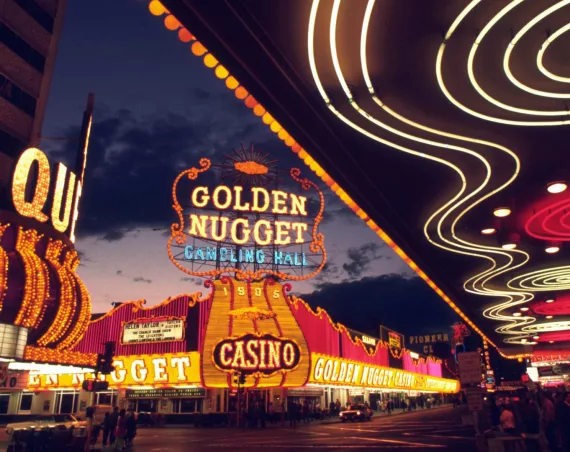
Food – Traditional English meals
Powered by RedCircle
In this podcast, I describe four traditional English meals and talk about the interesting language as I go.
At the bottom of the page, there’s a language activity and a task for you to complete in the comments section.
Transcript
Hello and welcome to Learn English Vocabulary. My name is Jack and I’m making this podcast for you to learn or revise English vocabulary. You can find a transcript of this podcast on LearnEnglishVocabulary.co.uk. There’s a page for this podcast with the transcript, an activity and a task for you to do in the comments section.
This week, I’m going to publish three podcasts. These podcasts are full of vocabulary related to food. I was just going to do one podcast, but then as the script got longer and longer, I thought it would be too much to publish in one podcast. These podcasts are vocabulary support for a new conversation class on English Focus for B1 and more advanced learners. If you are interested in joining the class, send me a message at jack@englishfocus.com and I’ll share the course details. Some of you will know that I have been working on English Focus for a long time. This conversation course is the first course that I’m running so it’s still in beta and will be very cheap.
The course is 6 classes and the first class is about food and in the class, I want learners to be able to talk about food. As well as knowing the names for different foods, it’s important to know how to talk about how the food is made and what the ingredients are and to say when and where you might eat different foods and of course to be able to say what it tastes like.
Over three podcasts, I’m going to talk about some popular meals in the UK and some snacks or food you might grab if you are away from your house and in the third part, I’ll talk about some sweets or desserts.
I’m going to describe some of the most popular meals and foods in the UK. These are all foods that I have eaten, but they are not meals I eat every day. They are common enough though that you will come across them if you visit the UK. I’m going to describe them first and I want you to try to guess what the food is, and then I’ll tell you. Sometimes the name might not be familiar. I will stop and talk about vocabulary along the way.
OK. Here’s the first food.
This meal is sausages, potatoes and gravy. It’s normally served with peas and carrots, but the important parts are the sausages and the potatoes. In this meal, the potatoes are … well, if I say how they are prepared, it might give away the meal. OK, the potatoes are boiled and then crushed and squashed together with some butter.
Do you know what this meal is called in English?
This delicious food is called bangers and mash. So the way of preparing potatoes that I described is known as mashing. You might be offered mashed potatoes or it might be shortened to mash. We call sausages bangers because years ago, there was a shortage of meat and butchers would add water to their sausages to make them heavier. When these sausages were fried, sometimes they would explode which is why they are called bangers.
Before I talk about the next food, I want to highlight some language. You might have noticed that I used the verb to prepare to talk about how food is made. We do use the verb make to talk about food, especially when we’re talking about the ingredients, that is what the food is made of or from. When we are saying how it is made, we usually use the verb prepare. I said that the way that the potatoes were prepared was in the name of the meal. The potatoes were prepared by mashing them.
I also mentioned two ways of cooking food. I said the potatoes are boiled which means they are cooked in a pan in water that is heated until it is boiling. The other way of cooking that I mentioned was frying. I said that the sausages would explode when they were fried. Frying means cooking in oil. If you use a shallow pan and a little bit of oil, that’s just frying. If you use a deep pan with lots of hot oil, that’s deep frying.
Let’s move on to the next meal.
The next meal is a real treat that people only eat on one day of the week. It’s a big meal, usually home cooked. When I was a kid, it was a major family ritual. We didn’t always eat together, but once a week, we’d all sit down to enjoy a chicken or a joint of beef, pork or lamb with roast potatoes, roast or boiled veg. My mum was never much of a fan of vegetables so would just boil vegetables and stick butter on them. Now I prefer roast or steamed veg. If we were having beef, there would also be Yorkshire pudding and all of it would be covered with a rich gravy.
Do you know what this meal is called in English?
This meal is normally called a Sunday roast. You can have a roast dinner on any day of the week, but families often get together for a special roast on Sundays. The best Sunday roasts are home-cooked, but if you want to try a sunday roast if you are ever on holiday in the UK, you should be able to find a reasonable roast in a pub. But do look at reviews online first as the quality varies a lot.
I said that this meal is a real treat. A treat is something special that you like. It’s only a treat if it’s something that you do rarely. I think once a week is still a treat. When my kids do something really good, I might take them out for an ice cream for a treat.
Roasting is a way of cooking something in the oven. There are two words for cooking food in an oven. You can roast meat and vegetables and you can bake bread and cakes. The way of cooking is exactly the same, we just use a different word for cakes and bread. I tried looking up the exact difference, but all I could find was something strange about the structure of food. If the food already has a structure, when you put it in the oven it’s roasting, but if you’re cooking something that’s wet or squidgy, then it’s baking. So as part of a sunday roast, you might bake yorkshire pudding in the oven at the same time as roasting potatoes.
When you roast meat, the fat and juices that come from the meat when you are cooking can be used to make a sauce. That’s called gravy. You can also buy a type of powder to make gravy, but that’s not as good.
The next meal I want to describe is probably the most famous food from the UK. There are only two main parts of this meal. The first is cod or haddock fillets deep fried in batter and the second … well, it’s in the name of the meal so I won’t say it just yet. It’s a type of fried potato. We think of this as a traditional British food, but I think the style of cod actually comes from Portugal and the style of potatoes comes from Belgium. However, the way it’s cooked and served in the UK is quite distinctive.
Do you know what this meal is called in English?
I’m talking about fish and chips. The phrase fish and chips is so common in English that the words fish and have contracted together and we say fishen … fish and chips. Fish and chips are sold in little take away shops called fish and chip shops or less formally, chippies. So you might hear someone offer to nip down to the chippy to pick up some fish and chips.
The last of the full meals that I am going to describe is eaten in the morning and includes bacon, eggs, black pudding, sausages, mushrooms, beans, tomatoes, hash browns and toast. I have not had a … one of these for a long time, but it’s a real treat. In fact, the only time I’m likely to eat this much in the morning is if I’m staying in a nice hotel because they often offer this sort of food in the morning.
Do you know what this meal is called in English?
In England it’s called a Full English Breakfast. It’s sometimes called a fried breakfast or a fry up because of the way it’s cooked. You can also find a Full Scottish Breakfast which usually has some haggis and a strange sausage patty as well and there are versions in Ireland and Wales. The different versions have different elements, but they are all very big meaty breakfasts.
As well as hotels, you can find this sort of meal in a special sort of restaurant in the UK called a greasy spoon. The adjective greasy describes things that are slightly wet with oil so they look a bit shiny and feel a bit slimy. Greasy spoons are restaurants that sell lots of fried food so inside, often everything is a little bit oily. These restaurants open early for breakfast and usually close after lunch. I am not sure that they are that common any more. I’ve not been in one for years.
OK – so that’s 4 meals that you can try if you come to the UK. Later this week, I’m going to talk about 4 snacks you should find if you come to the UK and then at the end of the week I’ve got a podcast on 4 desserts. The language from these podcasts is all for the vocabulary input for an intermediate conversation course on English Focus. If you are interested in joining the course send me an email at jack@englishfocus.com and I’ll send you the course details.
I hope you have enjoyed this podcast. As always, I love reading your comments so please leave me a comment on the site or a rating or a review on Apple podcasts. I love to hear from you and any comments or suggestions you have. Thank you also to those of you that have bought me a coffee. I really appreciate it.
If you are interested in joining my beta conversation course please do get in touch or if you have any questions or comments, I’d love to hear from you so please visit LearnEnglishVocabulary.co.uk and say hello.
Thanks for listening.
Vocabulary Activity
Task
Describe a traditional meal from your country.
- What does it taste like?
- What is it made from?
- How is it prepared?
- Where and when do you eat it?
Leave your description in the comments section below.




